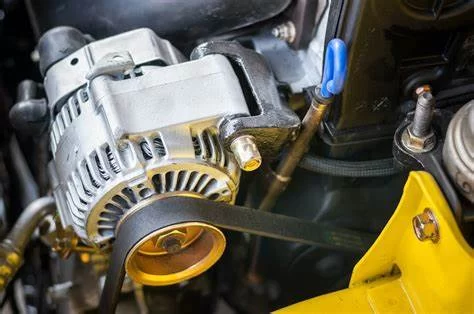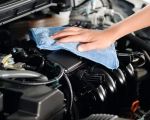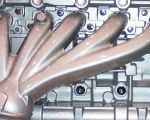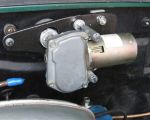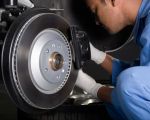How to Deal with a Car with a Dead Alternator
Picture this: You’re driving down the road, and everything is going smoothly when suddenly, the car starts acting up. You notice the lights dim, the dashboard flickers, and before you know it, the car just dies. You try to restart it, but nothing happens. This happened to me once, and it turned out to be a dead alternator, which I didn’t fully understand at the time. After calling for roadside assistance and getting my car towed to a repair shop, I learned quite a bit about dealing with a car that has a dead alternator. If you find yourself in a similar situation, here’s everything I wish I had known then about handling a dead alternator and how to solve the problem effectively.

Millennium Toyota Service Department
257 N Franklin St, Hempstead, NY 11550, USA
1. What Is an Alternator and Why Is It Important?
Before diving into how to deal with a car that has a dead alternator, it's important to understand the role of the alternator in your vehicle. The alternator is a crucial component of your car’s electrical system. It’s responsible for charging the battery and supplying power to the vehicle’s electrical components, such as the lights, radio, and air conditioning, when the engine is running. Without a functioning alternator, your car will rely entirely on the battery, which quickly depletes without recharging.

White Plains Honda Service Center
61 Bank St, White Plains, NY 10606, USA
1.1 Symptoms of a Dead Alternator
When my alternator died, I was surprised by how quickly it affected my car. There were a few signs I noticed before the car died completely. Some of the most common symptoms of a failing alternator include:
- Dim or flickering headlights: The headlights might seem dimmer or flicker as the alternator fails to provide enough power.
- Warning light on the dashboard: Most modern cars have an alternator warning light, often shaped like a battery, that will turn on if the alternator is failing.
- Electrical issues: Other electrical components, like the power windows, radio, or air conditioning, may stop working properly.
- Strange noises: You might hear a whining noise, which could indicate an issue with the alternator’s bearings or drive belt.
If you notice any of these signs, it’s essential to get your alternator checked out before it fails completely, as it could leave you stranded.
2. What Happens When the Alternator Dies?
When my alternator died, the car initially seemed to function fine. However, it didn’t take long before the car’s electrical system started to show signs of failure. Once the alternator stopped working, the battery was no longer charging, and the car’s electrical systems began to drain the battery. Eventually, the battery ran out of power entirely, and the car stopped. At this point, I knew I had to act fast, but here’s what you need to understand about what happens when the alternator dies.
2.1 The Battery Drains Quickly
Without a working alternator, the battery is the only source of power for your car’s electrical systems. Since the alternator isn’t charging the battery, the energy in the battery gets depleted quickly, especially if you’re using high-demand electrical systems like the air conditioning or headlights. I learned this the hard way when I was still able to turn on my car after it died, but it wouldn’t start again once I turned it off. The battery had been drained completely, and I couldn’t get any power from it.
2.2 Loss of Vehicle Function
As the battery runs down, your vehicle starts to lose power. This means that all of the car’s electrical systems, including the engine’s ignition system, become unreliable. If the alternator isn’t functioning, the car won’t start, and the battery won’t be able to provide power for long. I had to call a tow truck to get my car to a repair shop, as the car wouldn’t start no matter how much I tried. It’s a frustrating situation, and it’s best to address the issue before it leaves you stranded on the side of the road.
3. How to Deal with a Dead Alternator on the Road
If your alternator fails while you’re on the road, here are a few steps you can take to handle the situation:
3.1 Turn Off Non-Essential Electrical Systems
When I realized my alternator was failing, I immediately turned off as many electrical systems as I could. This includes the air conditioning, radio, headlights, and anything else that draws power from the battery. The goal is to preserve as much battery life as possible. By minimizing the load on the battery, you can extend the time you have before the battery completely dies.
3.2 Head to the Nearest Repair Shop (If Possible)
If you’re able to safely drive your car, it’s important to head to the nearest repair shop or mechanic. I was lucky enough to make it to a local auto repair shop, but that’s not always possible, especially if you’re in a remote area or the battery drains too quickly. If driving isn’t an option, your next step is to call for roadside assistance. I’ve found that many roadside assistance providers offer towing services, so they can help get your car to a shop for a new alternator.
3.3 Call for Towing Assistance
If your car is no longer running, or if it’s unsafe to drive, it’s time to call for towing assistance. I had to call a tow truck when my alternator failed completely, and I was stranded. Towing services can help transport your vehicle to a mechanic or auto repair shop. Many roadside assistance companies offer towing services as part of their packages, so check to see if you’re covered before you have to call. I was fortunate enough to have roadside assistance, which made the whole process easier and less stressful.
4. How a Mechanic Can Fix a Dead Alternator
Once your car is towed to a mechanic, they will diagnose the problem and replace the faulty alternator. This process usually involves disconnecting the battery, removing the broken alternator, and installing a new one. The mechanic will then check the charging system to make sure everything is working properly. In my case, the repair was relatively straightforward, and the mechanic replaced the alternator within a couple of hours. While I had to pay for the part and labor, the repair was essential to getting my car back on the road.
4.1 Signs You Need to Replace the Alternator
Some of the signs that your alternator may need to be replaced include:
- Battery warning light: If the warning light on your dashboard illuminates, it’s a sign that the alternator is not charging properly.
- Flickering lights: If your headlights or dashboard lights flicker or dim, it could indicate an alternator issue.
- Dead battery: A dead battery can often be a sign that the alternator isn’t recharging it properly.
- Strange noises: A failing alternator can produce a whining or grinding noise from the engine area.
Once the alternator is replaced, your car’s electrical system will be back to normal, and the vehicle should start without any issues.
5. Preventing Alternator Issues in the Future
After my experience, I’ve made it a point to take better care of my car’s alternator to avoid future problems. Here are a few tips to help prevent alternator failure:
5.1 Regular Maintenance
Having regular maintenance performed on your car can help detect any potential issues with the alternator before they become serious problems. Mechanics can check the charging system during routine service, and early detection can save you time and money down the road. I now make sure to have my alternator checked during regular tune-ups.
5.2 Avoiding Short Trips
Frequent short trips can prevent the alternator from charging the battery fully, as the engine doesn’t run long enough. I’ve learned that longer trips allow the alternator to recharge the battery completely, reducing the chances of battery drain.
6. Conclusion
Dealing with a dead alternator can be a frustrating experience, but with the right knowledge and preparation, you can handle the situation smoothly. Whether you’re dealing with warning lights, flickering lights, or a dead battery, understanding the role of the alternator and knowing how to respond can save you time and stress. If you find yourself stranded, don’t hesitate to call for roadside assistance or a tow truck to get your vehicle to a mechanic for repairs. Regular maintenance and understanding the signs of alternator failure can help prevent this issue in the future and keep your vehicle running smoothly.

